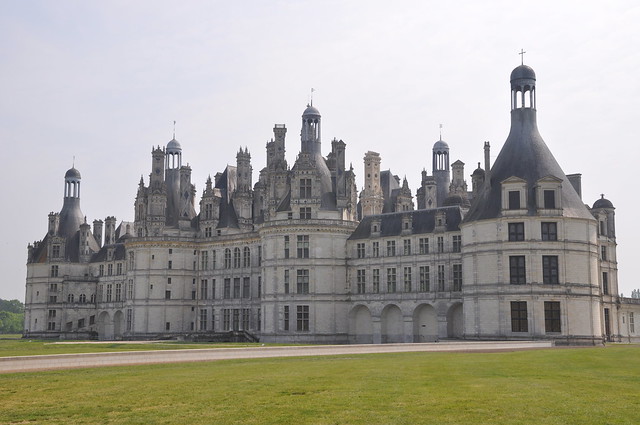
Não demorámos muito desde Orleães até chegar á zona de Chambord. O trajecto é algo de maravilhoso, tudo á volta é verde ou amarelo ou lilás ou tudo junto se tivermos sorte.
A beleza do lugar era tal que até nos perdemos num desses campos floridos, até percebemos que estávamos numa estrada sem saída á nossa frente só entraria um tractor.
Sabemos que estamos no lugar centro quando uma placa nos diz: "Domaine National de Chambord".
Tínhamos visitado Versalhes antes, poderia ter retirado a Chambord o seu devido protagonismo. Mas não. É único e especial, para não falar no seu entorno, no lago com os barcos e de toda natureza que o rodeia. É grandioso e dá que pensar que tenha sido construído para servir de alojamento real para quando o Rei saía para caçar.
Not much since we spent Orleans until you reach the area of Chambord. The route is something wonderful, everything will turn it green or yellow or purple or all together if we're lucky.
The beauty of the place was such that until we get lost in these flowery fields, until we realized we were at a dead end road ahead will only enter a tractor.
We know we are in place when a plaque in center says: "Domaine National de Chambord."
We visited Versailles before, could have withdrawn its due role Chambord. But no. It is unique and special, not to mention its surroundings, the lake with boats and all nature that surrounds it. It's great and makes me think that it was built to serve as housing for real when the King went out to hunt.
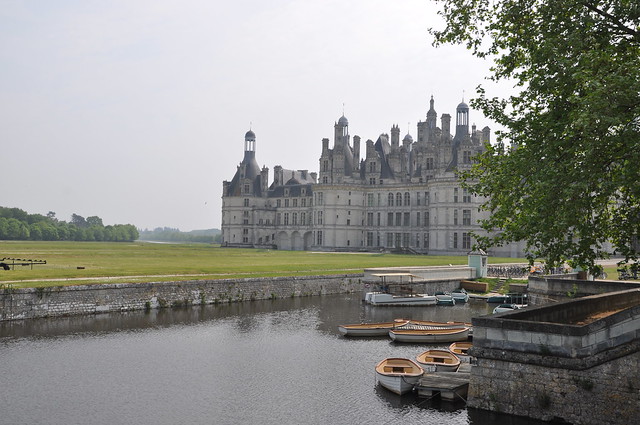
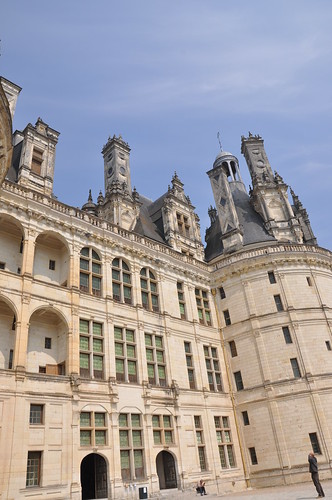
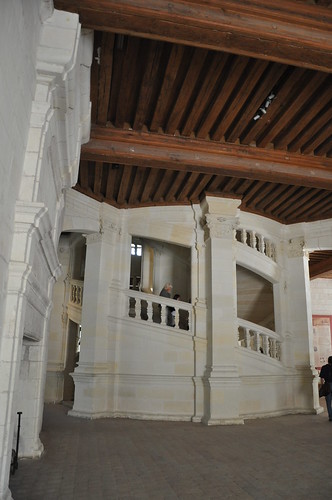
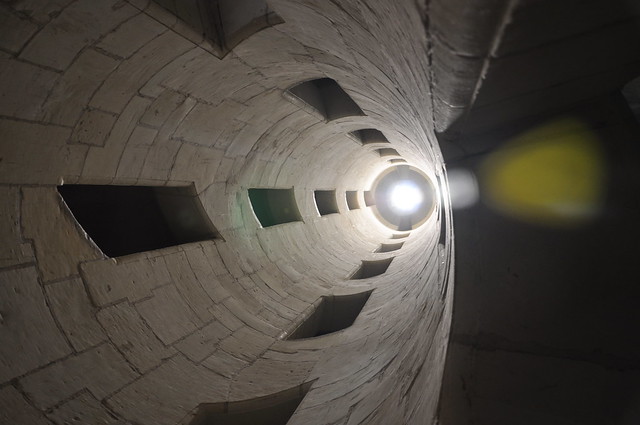 Conhecer o Castelo e o seu interior é também conhecer as várias personagens importantes que por ele passaram e que de uma maneira ou de outra deixaram a sua marca. Um dos quartos mais luxuosos era o de Luis XIV com a cama dossel, o chão completamente trabalhado e duas grandes tapeçarias adornavam a zona da cama.
Conhecer o Castelo e o seu interior é também conhecer as várias personagens importantes que por ele passaram e que de uma maneira ou de outra deixaram a sua marca. Um dos quartos mais luxuosos era o de Luis XIV com a cama dossel, o chão completamente trabalhado e duas grandes tapeçarias adornavam a zona da cama.
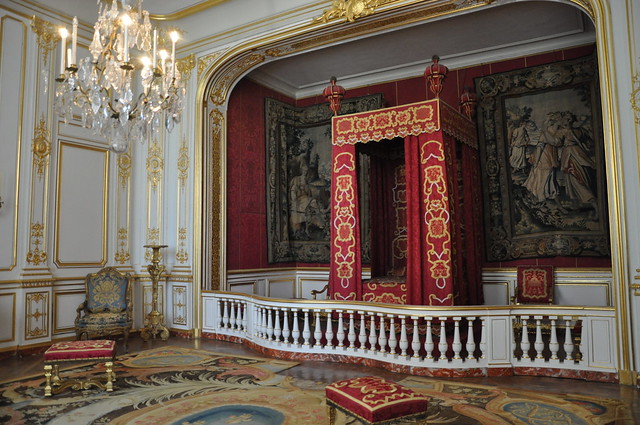
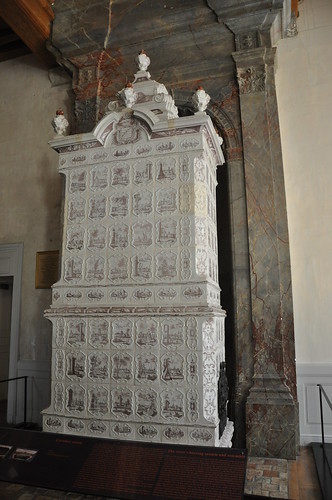
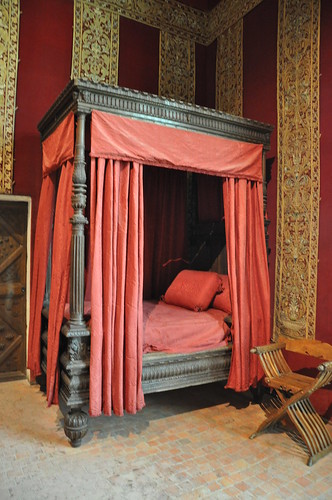
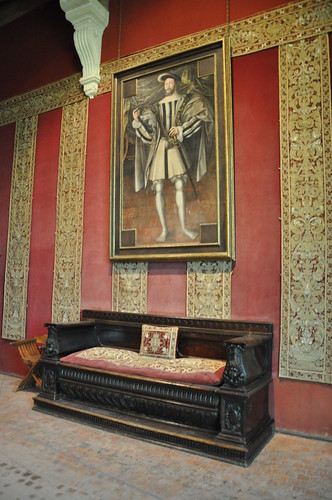

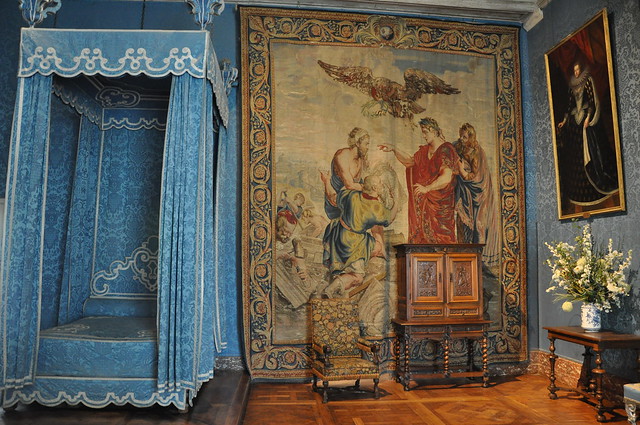
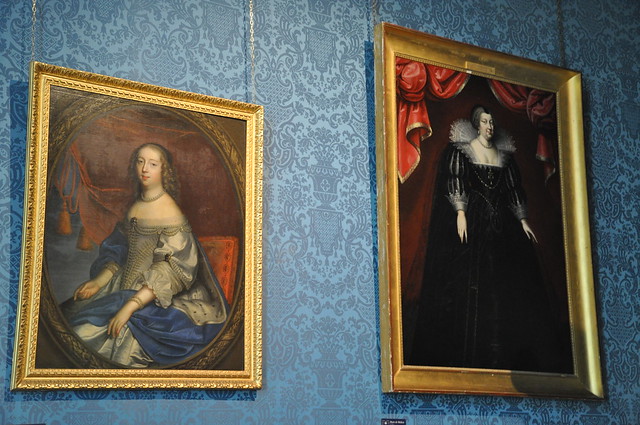
In the Castle there is also a chapel where there is a statue of Isabel of France at the entrance, the princess who was executed during the French Revolution as it was the sister of King Louis XVI. The memorial tribute was offered to the commander of Chambord.
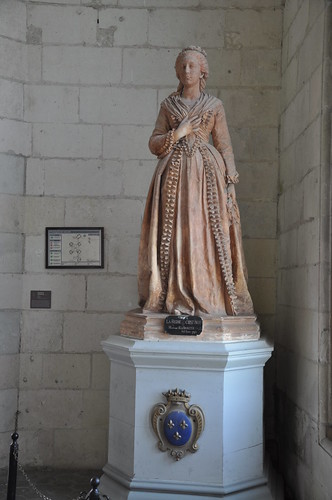
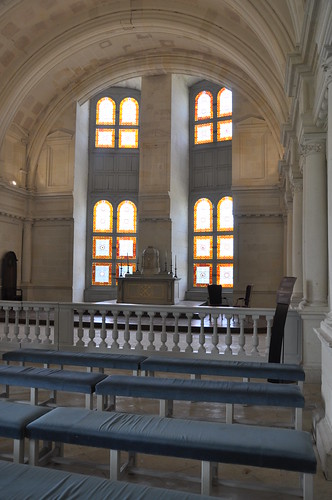
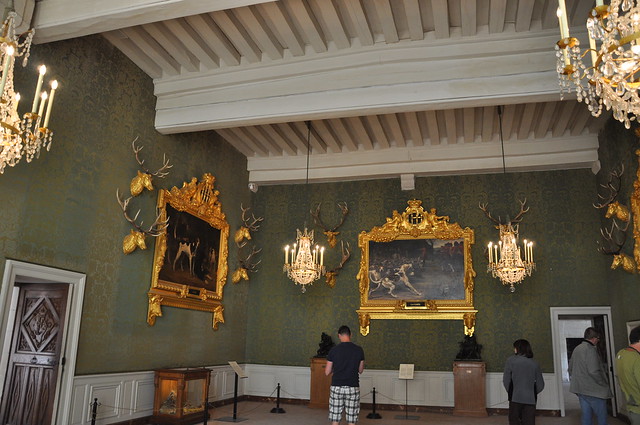
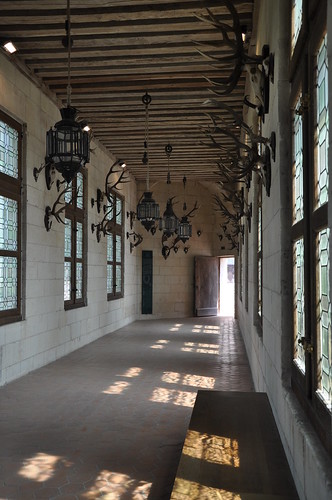
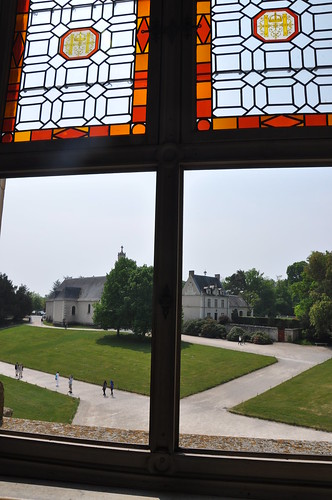
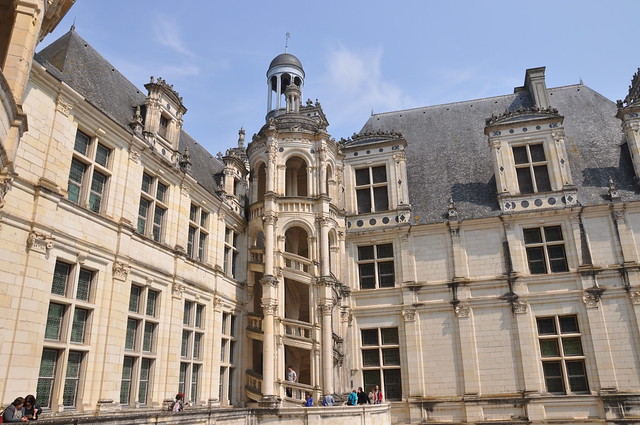
In the area of the roofs, in one of the highest points of the castle you can see the extensive grass field that is next to the entrance and the Cosson river passing nearby. They say that the King wanted to pass through there the Loire rather than the one that is here, within all this was a megalomaniac ideas this was one that people could dissuade him.
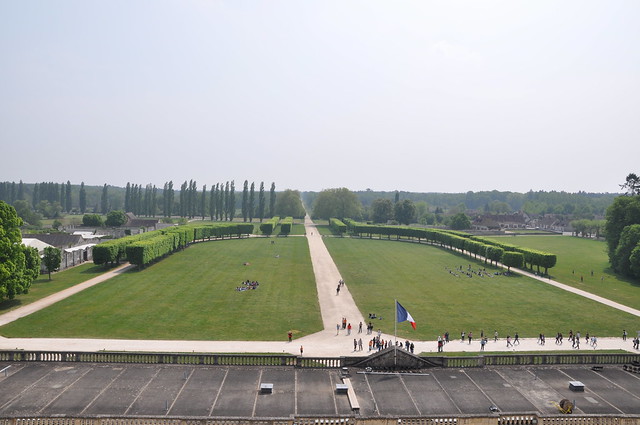
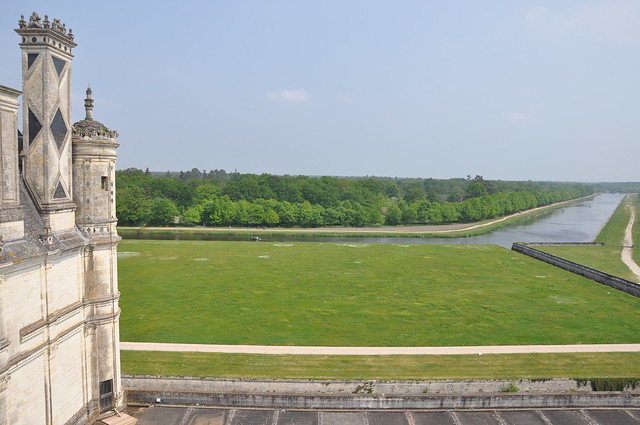
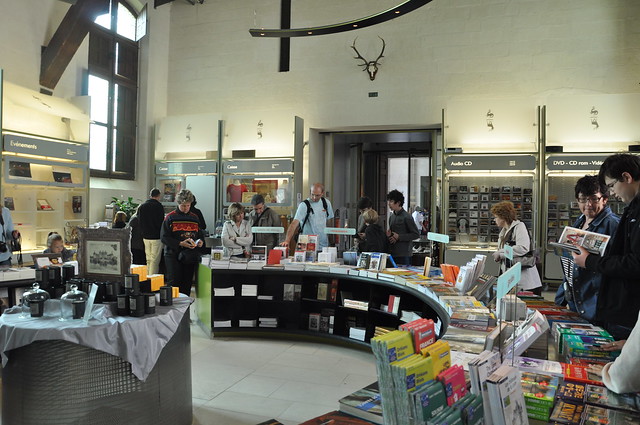 Ao sair passamos por uma sala onde podemos comprar todo o tipo de lembranças sobre o Castelo assim como alguns produtos da região. A entrada custa 9,5€ por pessoa e oferecem um guia que está disponível em várias línguas, uma delas o português.
Ao sair passamos por uma sala onde podemos comprar todo o tipo de lembranças sobre o Castelo assim como alguns produtos da região. A entrada custa 9,5€ por pessoa e oferecem um guia que está disponível em várias línguas, uma delas o português.
Upon leaving we passed a room where we can buy all sorts of souvenirs of the Castle as well as some local produce. Entrance costs € 9.5 per person and offer sa guide which is available in several languages, one of them is Portuguese.
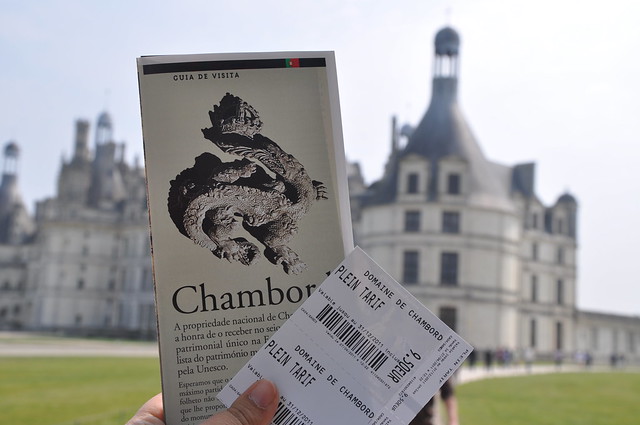

The beauty of the place was such that until we get lost in these flowery fields, until we realized we were at a dead end road ahead will only enter a tractor.
We know we are in place when a plaque in center says: "Domaine National de Chambord."
We visited Versailles before, could have withdrawn its due role Chambord. But no. It is unique and special, not to mention its surroundings, the lake with boats and all nature that surrounds it. It's great and makes me think that it was built to serve as housing for real when the King went out to hunt.

Construído no reinado de Francisco I, Chambord é um magnifico exemplo do tipo de construções sumptuosas que tanto agradavam a este rei que tinha uma grande admiração pelo o Renascentismo italiano e por um dos seus grandes protagonistas, Leonardo Da Vinci a quem supostamente teria pedido para criar o castelo que serviria para albergar a côrte quando saiam para caçar.
Built in the reign of Francis I, Chambord is a magnificent example of the kind of sumptuous buildings that both appealed to this king who had a great admiration for the Italian Renaissance and one of its major protagonists, Leonardo Da Vinci who allegedly he asked to create the castle that would serve to house the court when they went out to hunt.


No ano de 1519 a construção começa mas só terminaria um século depois.Logo ao entrar vemos a fantástica (e famosa) escadaria de dupla-hélice cujo formato permite que a pessoa que sobe não se cruza com a que desce.
In 1519 construction starts but ended only a century after. Logo see the fantastic (and famous) double-helix staircase whose shape allows the person climbing do not cross with that descends.
In 1519 construction starts but ended only a century after. Logo see the fantastic (and famous) double-helix staircase whose shape allows the person climbing do not cross with that descends.

Outro ponto de interesse é a salamandra de porcelana, que hoje está reconstruída com peças dos três que existiam antes que foram comprados pelo Marquês de Saxe.
Discover the castle and it's interior is also a way to know the importante people that were here and that in one way or another have left their mark. One of the most luxurious rooms was that of Louis XIV with a canopy bed, the decorated floor and two large tapestries adorned the area of the bed.
Another point of interest is the porcelain salamander, which is now rebuilt with parts of the three that existed before, they were bought by the Marquis de Saxe.
Discover the castle and it's interior is also a way to know the importante people that were here and that in one way or another have left their mark. One of the most luxurious rooms was that of Louis XIV with a canopy bed, the decorated floor and two large tapestries adorned the area of the bed.
Another point of interest is the porcelain salamander, which is now rebuilt with parts of the three that existed before, they were bought by the Marquis de Saxe.



Noutra das alas uma reconstituição de como seria o quarto de Francisco I, a placa explica o espírito viajante e aventureiro do Rei e que por isso todos os móveis que transportava nas suas viagens tinham que ser desmontáveis. Onde ficasse instalado as paredes seriam cobertas com belas tapeçarias para aquecer o quarto.
In another wing a reconstruction of how the bedroom of Francis I would be, the signs explains the traveler and adventurous spirit of the King and therefore all furniture carrying on their travels had to be dismantled. Wherever he would stay the walls would be covered with beautiful tapestries to heat the room.


Mas quando o rei estava em Chambord, instalava-se num outro quarto que alguns séculos mais tarde seria o Quarto da Rainha, D. Maria Teresa de Espanha casada com o Rei Sol, D. Luís XIV. Depois da morte da rainha é Madame Maintenon que ocupa o quarto quando acompanha o Rei a Chambord. Antiga amante e confidente, foi a segunda mulher do Rei e grande rival de outra conhecida dama e amante do Rei Sol, a Marquesa de Montespan.
But when the king was in Chambord, he would stay in another room that centuries later would be the Queen's Bedroom, D. Maria Theresa of Spain married to the Sun King, D. Louis XIV. After the Queen's death it is Madame Maintenon who occupied the room when the King came to Chambord. Former lover and confidante, was the second wife of King and great rival of another well-known lady and mistress of the Sun King, the Marquise de Montespan.
But when the king was in Chambord, he would stay in another room that centuries later would be the Queen's Bedroom, D. Maria Theresa of Spain married to the Sun King, D. Louis XIV. After the Queen's death it is Madame Maintenon who occupied the room when the King came to Chambord. Former lover and confidante, was the second wife of King and great rival of another well-known lady and mistress of the Sun King, the Marquise de Montespan.


No Castelo está também uma capela onde há entrada está uma estátua de Isabel de França, a princesa que foi executada durante a Revolução Francesa uma vez que era irmã do Rei Luís XVI. O monumento de homenagem foi oferecido ao comandante de Chambord.
In the Castle there is also a chapel where there is a statue of Isabel of France at the entrance, the princess who was executed during the French Revolution as it was the sister of King Louis XVI. The memorial tribute was offered to the commander of Chambord.


Fica por relatar aqui uma grande parte do interior do Castelo, mas seria um post demasiado longo já que são muitas as salas que foram preparadas para retratar as épocas vividas neste espaço.
Much more remains to be told here about the interior of the castle, but it would be too long a post as there are many rooms that were prepared to portray the ages lived in this space.
Much more remains to be told here about the interior of the castle, but it would be too long a post as there are many rooms that were prepared to portray the ages lived in this space.




Na zona dos telhados, num dos pontos mais altos do Castelo podemos ver o extenso campo relvado que está junto á entrada e o rio Cosson que passa ali ao lado. Dizem que o Rei queria que passasse por ali o rio Loire em vez do que está actualmente, dentro de todas as ideias megalómanas esta foi uma que conseguiram dissuadi-lo.
In the area of the roofs, in one of the highest points of the castle you can see the extensive grass field that is next to the entrance and the Cosson river passing nearby. They say that the King wanted to pass through there the Loire rather than the one that is here, within all this was a megalomaniac ideas this was one that people could dissuade him.



Upon leaving we passed a room where we can buy all sorts of souvenirs of the Castle as well as some local produce. Entrance costs € 9.5 per person and offer sa guide which is available in several languages, one of them is Portuguese.


Website: http://www.chambord.org

Sem comentários:
Enviar um comentário